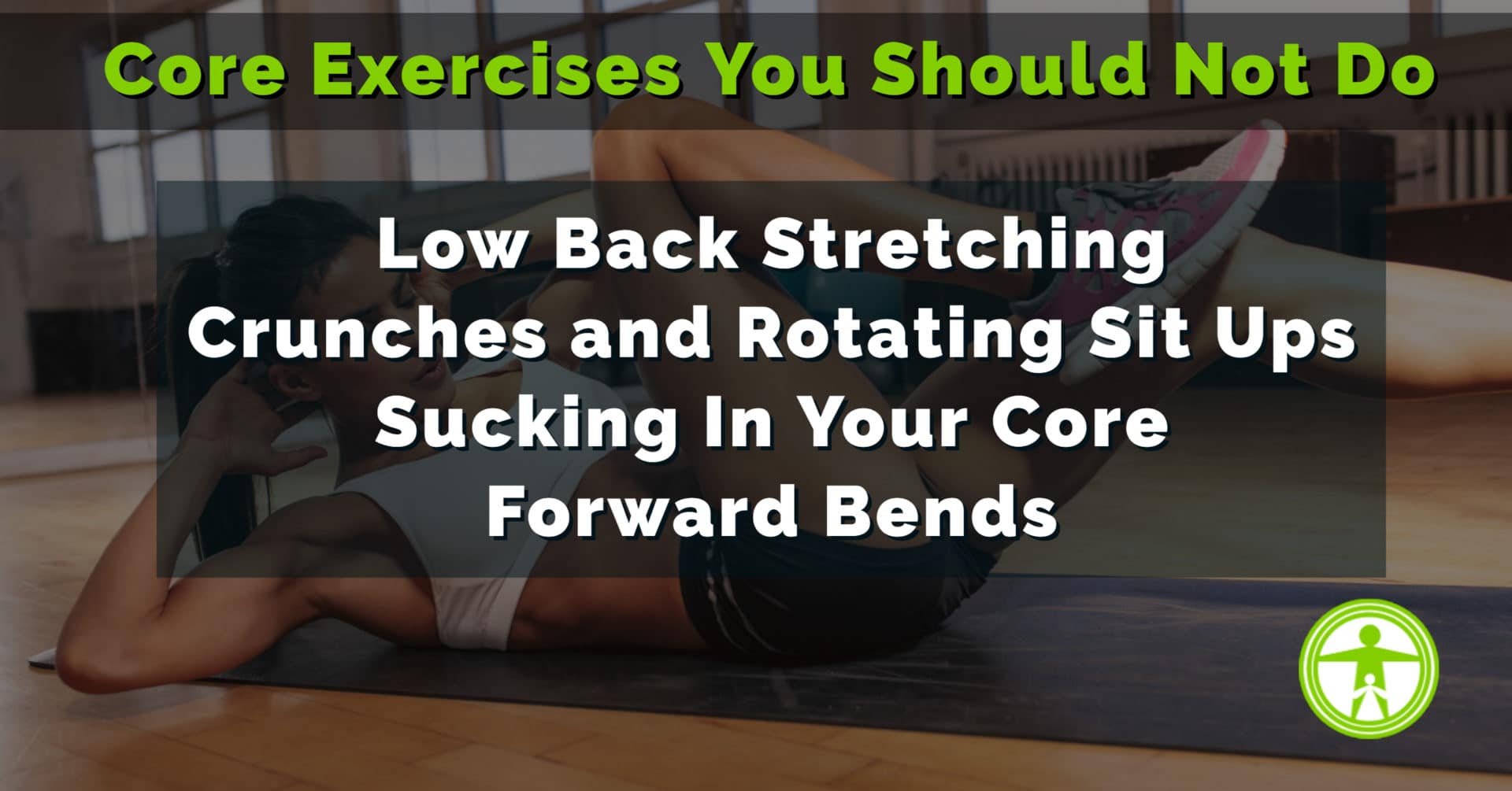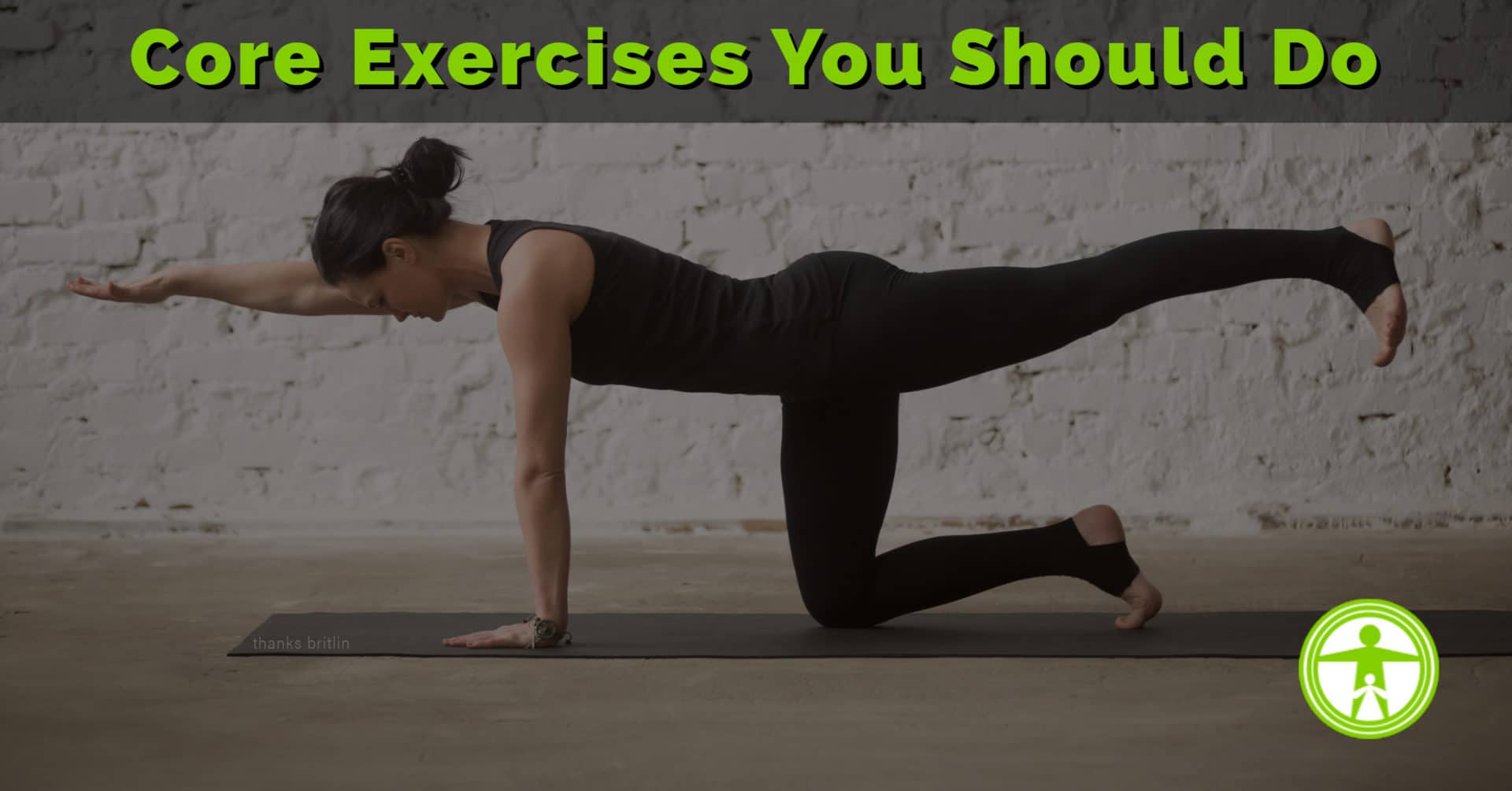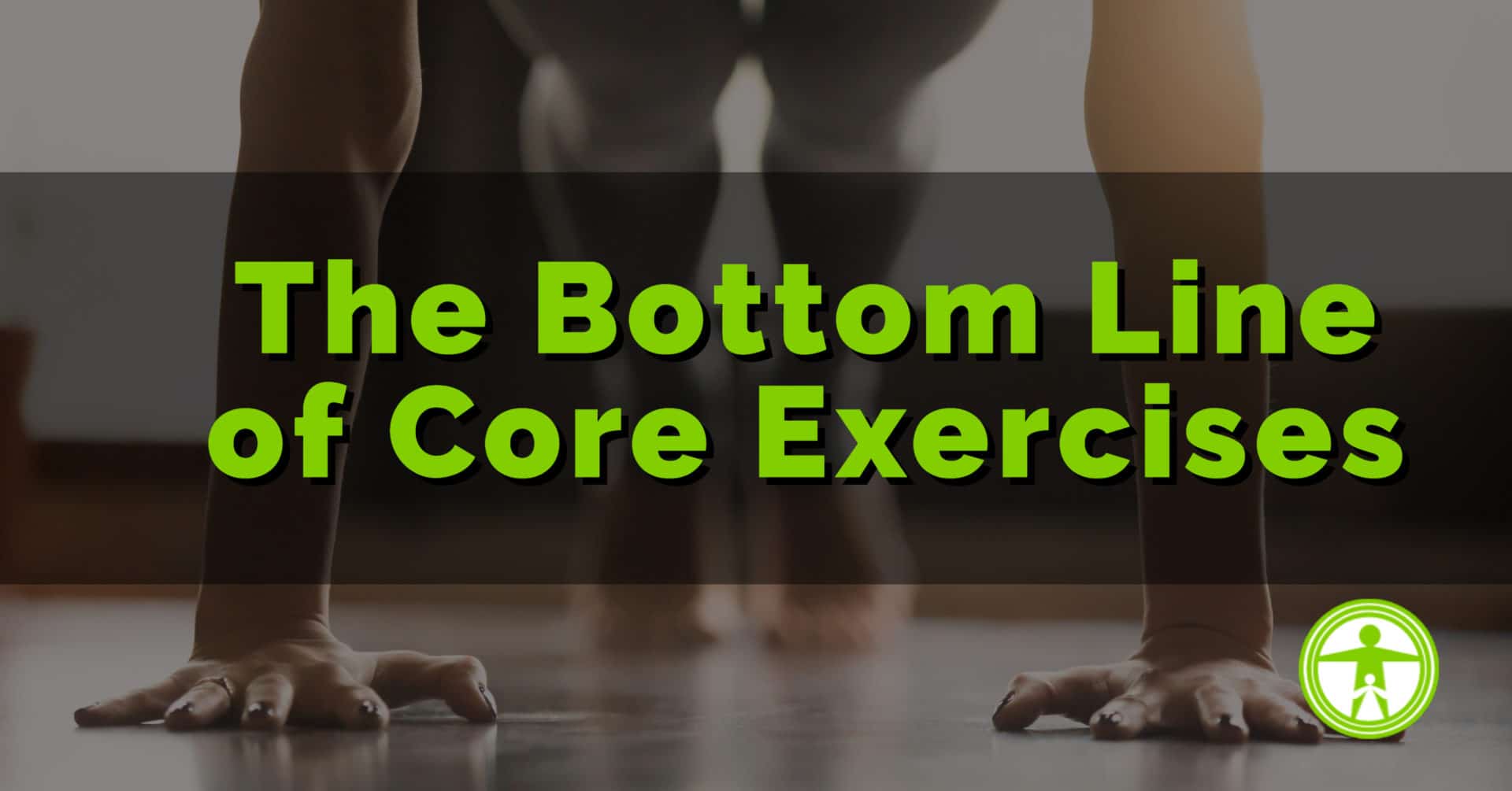Why You Should Fix Your Foundation
Core Exercises are a topic that undoubtedly comes up when someone struggles with back pain or is interested in strengthening their spine.
Back injuries are the most common of all orthopedic injuries and they happen in gyms and the workplace quite a bit.
Unfortunately, when someone hurts their back, they tend to do movements, stretches or core exercises that cause more harm than good.
Most people have degeneration in their spines, but only some people are symptomatic or feel pain, muscle spasms and discomfort.
In fact, herniated discs, bulging discs and spine degeneration (arthritis) are all very common, yet few people are aware they have it until their nerves become so inflamed and irritated.
And when this happens, you'll say things like, “My back is out!” Usually this causes you to go to the doctor.
Most doctors have no clue what's happening so they'll prescribe anti-inflammatories, cortisone shots or muscle-relaxers.
This can help, but it certainly won't fix the problem.
And when you get frustrated enough with the pain and discomfort, you'll get some imaging done such as X-rays or MRI's.
And that's when you find out that your spine is in pretty bad shape.
But getting a diagnosis of a bulging disc, herniated disc or spine arthritis isn't going to fix anything either.
This degenerative process has been going on for years.
The problem builds over time due to repetitive trauma (poor posture, poor movement or lack of proper training and exercise, unhealthy lifting technique, etc.).
The reality is…
If you don't fix the foundation of your spine (i.e. improve core muscle function, change your posture and poor movement patterns), you'll have these up and down, “I've thrown my back out again” moments forever.
The notion that strengthening the core is all about your abs or doing more sit-ups is dated. In fact, the abs or rectus abdominus make up a tiny fraction of what we need to strengthen and balance.
The core musculature or “Foundation Muscles” include:
- Pelvic Floor Muscles
- Transversus abdominus
- Multifidus
- Internal and External Obliques
- Rectus abdominus
- Erector Spinae
- The Diaphragm

Core Exercises You Should Not Do
When it comes to understanding back pain, there is one person that likely knows more than anyone else on the planet.
According to Dr Stuart McGill, a back researcher (spine biomechanist to be exact), all the research to date on the role of our core musculature comes down to a few “Do's and Don'ts”.
Of all the muscles that are part of the core, here's the few that matter most:
- Abdominal muscles– rectus abdominis (the six pack), transverse abdominis (muscle underneath the six pack), obliques; internal & external (muscles on either side of the six pack)
- Lower back muscles – back extensors and quadratus lumborum
- Upper back muscles – latissumus dorsi (lats)
- Psoas muscle – muscle that runs from the front of the back to the upper leg
The quadratus lumborum (QL) is probably the most important muscle for back health you don’t know about.
It’s attached to each the vertebra of your lower back (lumbar vertabra), your rib cage, and your hip (pelvis) and it’s involved in bending your body to the side (lateral flexion), but for the most part doesn’t change in length too much. By being attached to every vertebra, the QL provides support to each vertebral joint and seems to have a unique ability to stabilize the lower back.
The core acts as a support system to your spine.
When we move, all the muscles of the core contract at the same time (co-contraction) to buttress (Dr. McGill’s word) the spine.
Core Exercises You Should Not Do
1. Lower back stretching
This decreases back stability and stresses the discs of the back.
2. Traditional crunches
These stress discs of the back and don’t activate the core properly.
3. Sucking in to activate your transverse abdominals
This doesn’t properly activate the core and in many people, doesn’t provide enough of a challenge.
4. Forward bends first thing in the morning
The discs in your back have extra fluid in them in the morning (after lying down all night) so they are more likely to rupture with the extra pressure.

The Best Core Exercises for Back Pain
Training the core is where most people get into trouble, because they try to train the core like any other body part — with heavy weights, or a full range of motion.
However, the key to core training for a healthy back is muscle endurance (not strength) and stability (the ability to brace, not move).
In most day to day activities and the sports we play, the core’s job is to stop movement.
For example: You open your car door — your core stops your spine from twisting as you pull the door open with your arm. You kick a soccer ball — your core stops you from keeling forward.
Pause for a moment and think about what that means.
You want your core to be stable and resist movement. So why are we stretching, overbending, and turning ourselves into pretzels?
Core exercises you should do
There are four exercise Dr McGill prescribes for back health: Modified curl-up, stir the pot, side bridge and bird dog.
- The modified curl-up is different from a regular curl up because one leg is bent while the other is straight; the hands are under the lower back and only lift the head and neck.
- Stir the pot is a plank-type exercise done on a stability ball with the added challenge of stirring the pot (moving your arms as if you’re trying to stir a large pot). If that is too hard you can just do a plank on the ball or even on the floor.
- Side bridge is a side plank from the elbows.
- Bird dog starts on all fours, like a dog. You lift the opposite arm and leg, focusing on stiffening the core. To make this harder instead of just lifting your arm and leg straight up and down, make squares at the top of the movement.
Here's a video walking you through it all:
Specific things to focus on while performing these exercises:
- Keep the tightening (isometric) part of the exercise to 10 seconds and add reps to progress in the exercises.
- Maintain form – once you can’t keep your spine tight, stop.

The Bottom Line for Core Exercises
Your core’s most important function is to stabilize your back and it works by simply cocontracting the muscle that makes up the core. No movement happens.
Stretching your lower back goes against what the core is trying to do – stabilize (the opposite of flexible/mobile/instable). Avoid stretching your lower back and bending at the spine; stretch the muscles around your hips and bend at the hip rather than the back.
Muscle endurance, not muscle strength, is what is important for back health. I’m not saying you shouldn’t train for strength, but that since your core muscles have to keep your back protected for hours at a time, endurance should be your goal for protection.
You might think you’re too advanced for these exercises to help, but you’ll be surprised, since most people train strength and not muscle endurance. If you are currently having back pain, go to a doctor before starting these exercises.
Bottom line
Whether you’ve had back pain in the past or not try these four exercises — modified curl-up, stir the pot, side bridge and bird-dog — every day for the next few weeks.
You have nothing to lose but some pain and spinal instability.
If doing these exercises doesn't help, and you have not had a proper spine examination, then that's the next and most important step!



